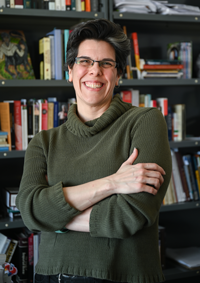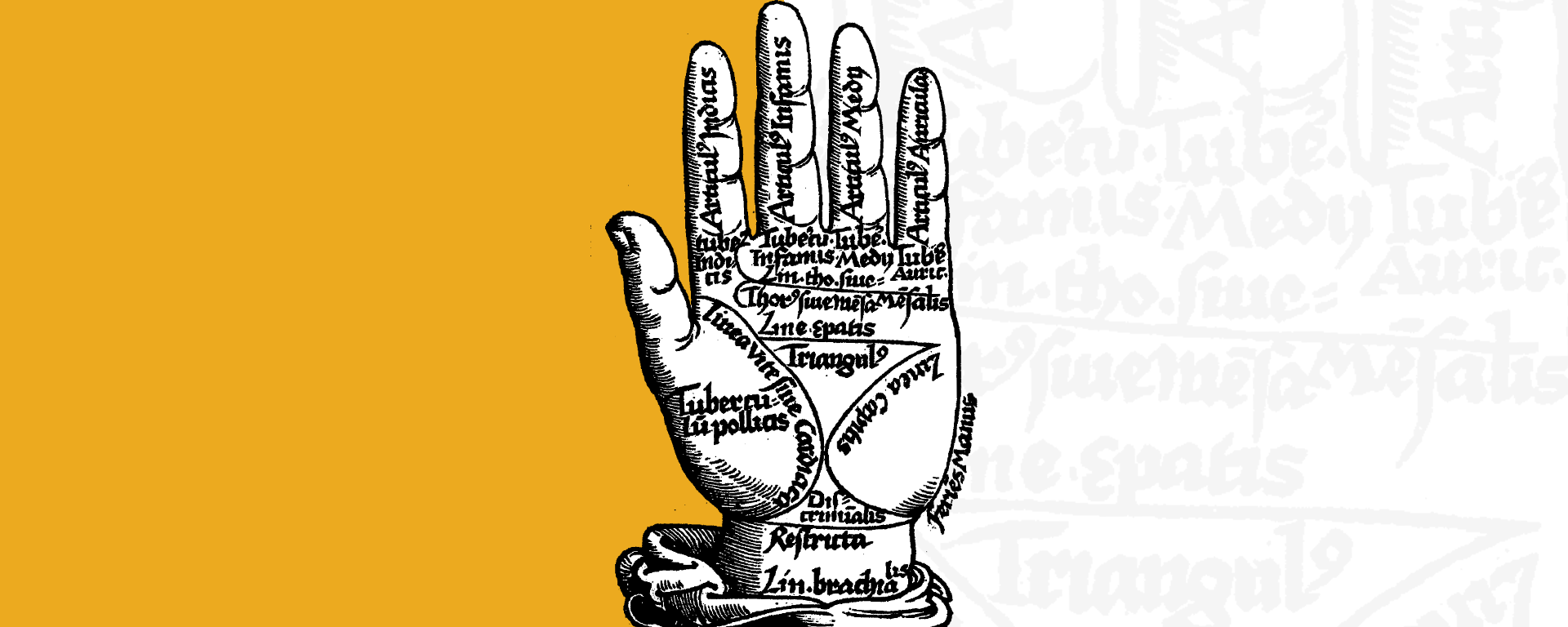The guy doesn’t feel well, needs to see a doctor. With a wife and three children, though, money is tight, so he can’t afford the university-taught physician who’s up on all the latest medical science.
There’s another doctor in town who’s cheaper, and his methods are bit more familiar, perhaps even more comforting. So he harnesses his ox to a wooden-wheeled cart and rolls along a dirt road to the small home of the physician.
It’s not in the 21st century, Dorothy.
In the Middle Ages, some physicians used what are known as medico-magical methods that included amulets, healing invocations, religious rites and face and palm reading.
“It was a way for physicians to understand on the outside of the body what is happening on the inside of the body,” says Kira Robison, UT Chattanooga associate professor of history.
Robison isn’t a hardcore proponent for blending medicine and magic but says she is fascinated by it.
In her first book, Healers in the Making: Students, Physicians, and Medical Education in Medieval Bologna (1250-1550), published in 2020, she wrote about the teaching of medicine and science through the writings of physicians Girolamo Manfredi, who lived from 1430 to 1493, and Alessandro Achilli, who lived from 1463 to 1512, both of whom taught medicine and philosophy at the University of Bologna in Italy and wrote extensively about the subject. She also studied the work of their student, Jacopo Berengario da Carpi, who lived from 1460 to 1530 and taught surgery and anatomy.
In fall semester 2022, Robison used professional development time to leave the classroom and begin work on her second book, which focuses on peripheral medicinal practices also found in medieval medical philosophy.
Focusing on the 13th through 15th centuries, she found that, even as the scientific understanding of human anatomy and its relationship to sickness moved forward, some physicians still used such methods as face and palm reading as diagnostic tools.
“For those who were trained in the practice through proper philosophical and medical courses, they were of potential use,” Robison says. “Earlier medical texts suggested these practices or other magic—such as healing amulets—might be a last resort for patients.”
These were tangential to the usual methods of physical examination, observation and analysis promoted by such ancient Greek philosophers as Aristotle.
His and others’ philosophy was based on the belief that the human body was a smaller representation of the larger universe; each was made of multiple parts working in harmony and, if one of those parts wasn’t functioning properly, neither was the whole.
Reading palms or faces generally wasn’t used to predict the future health of the patient, but some said they had value in assessing a person’s health in certain instances.
“A number of physicians and philosophers actually say that it is useful,” Robison says. “We can understand things that you wouldn’t normally see in a face-to-face doctor’s appointment where they ask you questions about your health.”
Most doctors who used medico-magic techniques combined them with scientific diagnosis, Robison says.

“A physician who knows how to use face and palm reading also can look at you, can watch you walk, can watch the movement of your face, your complexion and all of that and understand more of what is going on inside you than what you tell them. Anything that causes noticeable differences,” she says.
Palm reading in medicine, for instance, wasn’t a matter of: “Your lifeline shows that you’re going to drop dead in a matter of days.” Elements such as color and texture of the palm’s skin could be used in conjunction with other observations to diagnose physical problems such as restricted blood flow and kidney disease.
Still, prediction through mystical palm reading wasn’t out of the equation, and some believed that the various lines on the palm had to work in tandem, Robison says.
For instance, for a person to have a long life, it was necessary that the heart line (physical and emotional health) and the head line (mental health and clear thinking)—both of which run horizontally across the right palm—be relatively the same length, she says.
Face reading, meanwhile, could detect obvious medical issues such as the yellow tint of jaundice, the bright red of rosacea and the scaliness of eczema, she explains.
Robison said she uses her research findings in many of the courses she teaches. Studying medico magical medicine from the Middle Ages is valuable from historical, scientific and cultural points of view, Robison says.
“The reality of medieval medicine and magic was that there were no hard and fast lines drawn within—or even between—medicine, magic and religion,” she says. “Folks tried to draw these lines, for sure, but usually because they were trying to define or justify themselves against others—‘good’ and ‘proper’ against ‘bad’ or ‘improper.’ This spectrum reveals that the Middle Ages was a vital and vibrant era for medical, magical and religious thought.”
In her “Magic and Medicine” course, students demonstrated medico-magic techniques used in the Middle Ages. Some did face reading using photos of famous people such as Queen Elizabeth II. Some demonstrated anatomy by dissecting a watermelon. One student placed a curse on her across-the-hall neighbors who partied too much.
At the end of the course, Robison was subjected to an inquisitorial tribunal and, based on the readings in the class, found guilty as a heretic.
Being labeled a heretic was one of the punishments leveled by the Catholic Church for those who practiced palm and face reading and other medico-magical tools, she said.
“The religious-minded said, ‘You should be careful because this is either bad magic influenced by demons or spirits and, if it’s not that, then you’re trying to predict the future, and only God can know that because he’s all-knowing, all-seeing. So don’t be doing that.’”



